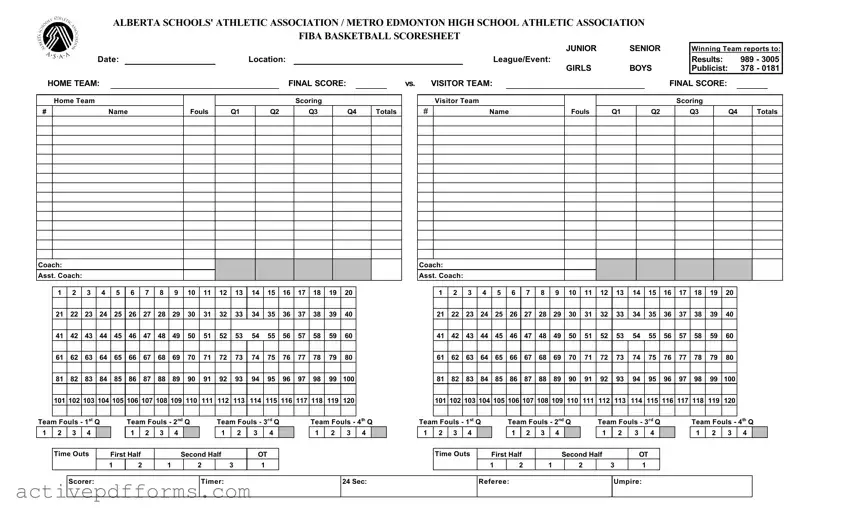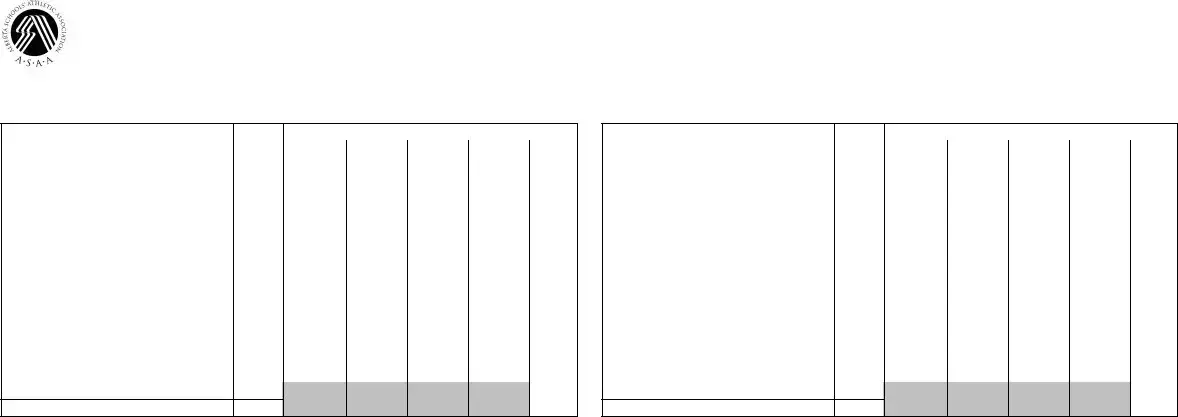In the competitive and dynamic world of school athletics, the Basketball Scoresheet plays a crucial role, serving as the definitive record for each game's outcomes and individual performances. This detailed form, endorsed by the Alberta Schools' Athletic Association and the Metro Edmonton High School Athletic Association, is specifically designed to capture a comprehensive array of game data—from the basics such as the winning team, game date, and location, to the intricate details like individual player statistics across quarter by quarter performance including points scored, fouls, and total contributions. Notably, the form accommodates both junior and senior divisions, ensuring inclusivity for all player levels. The structure of the Scoresheet is meticulously organized to include spaces for recording the final scores of both the home and visitor teams, the names and roles of team coaches, assistant coaches, and game officials such as the scorer, timer, and referees. Furthermore, it highlights the game’s dynamics by having sections dedicated to timeouts taken during each half and any overtime periods, as well as a tally of team fouls committed across the quarters, thereby providing a holistic overview of the game’s flow and discipline. In essence, the Basketball Scoresheet is an indispensable tool for officials and coaches alike, offering a clear and orderly framework to document the unfolding of each game, which in turn supports fair play, strategic planning, and the celebration of athletic achievement.

